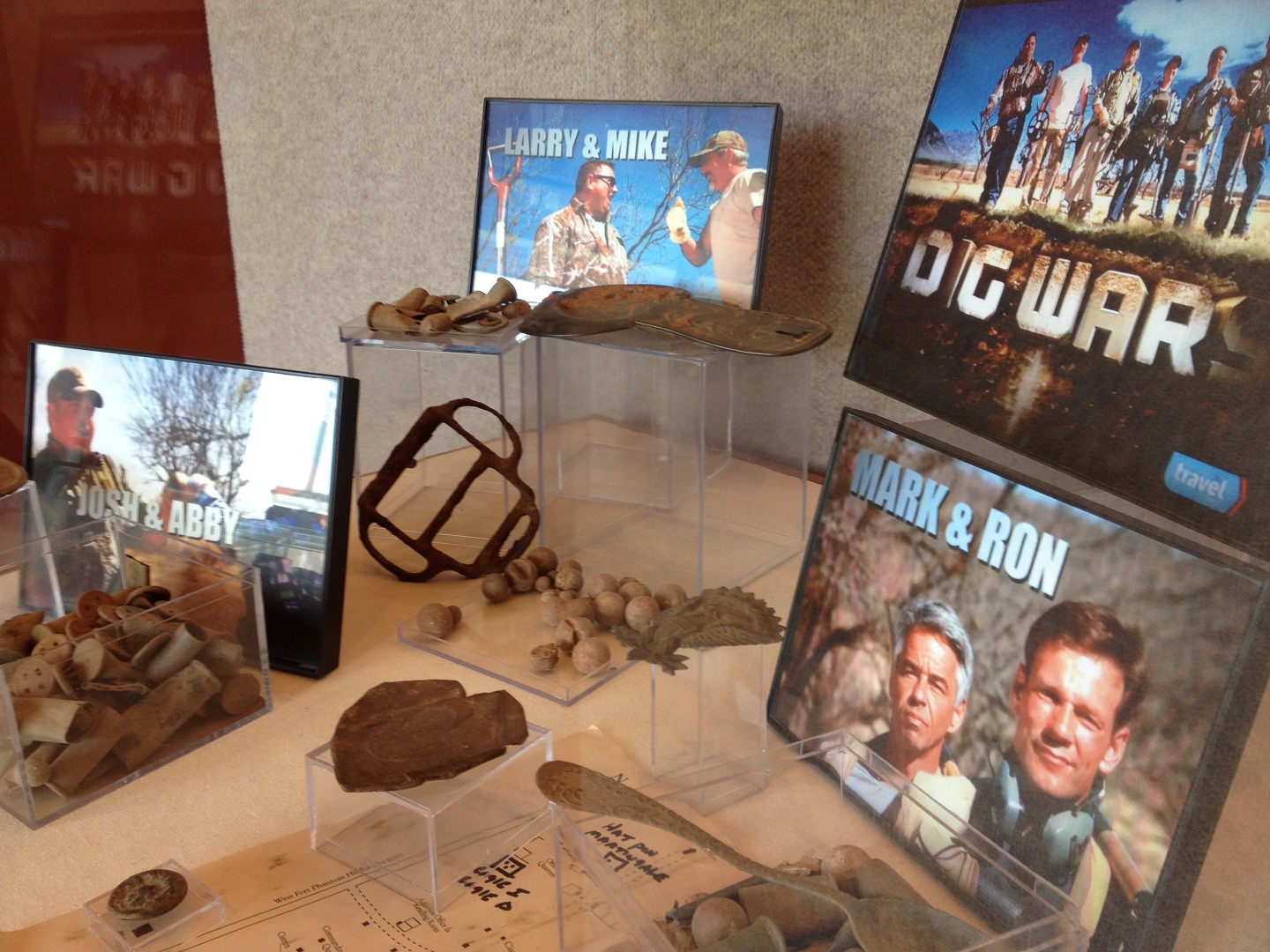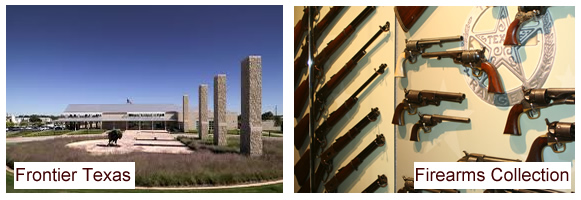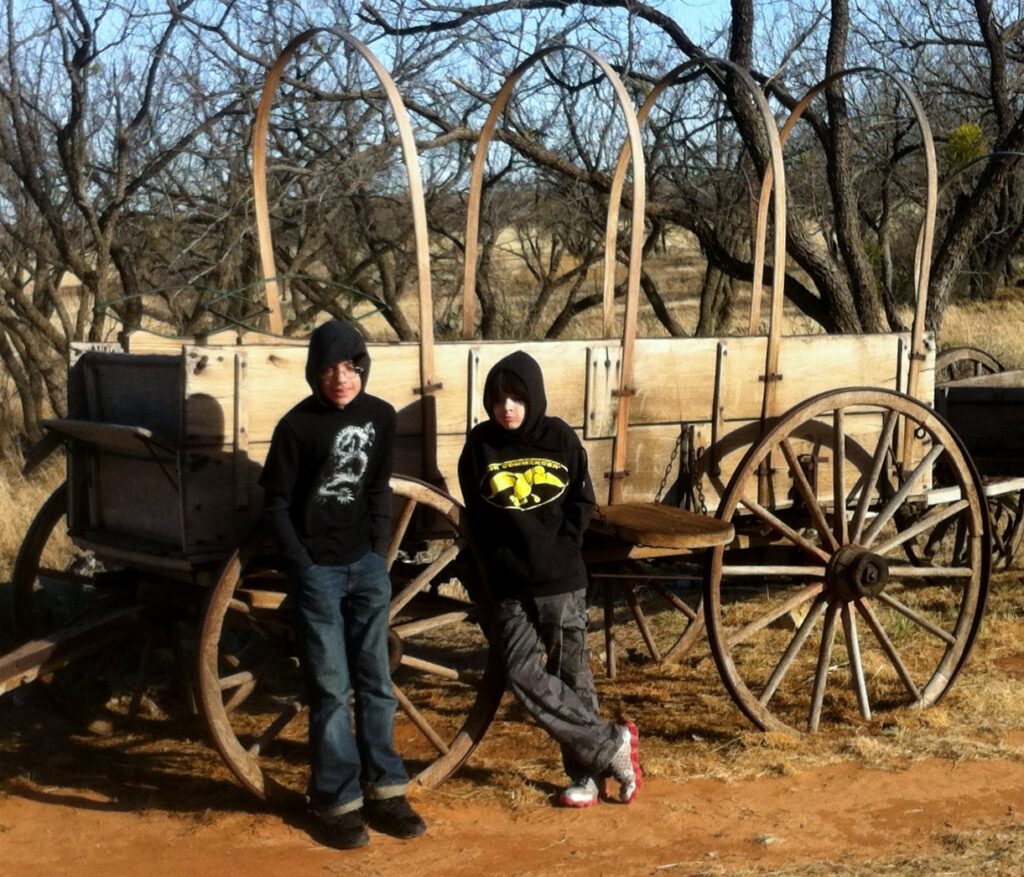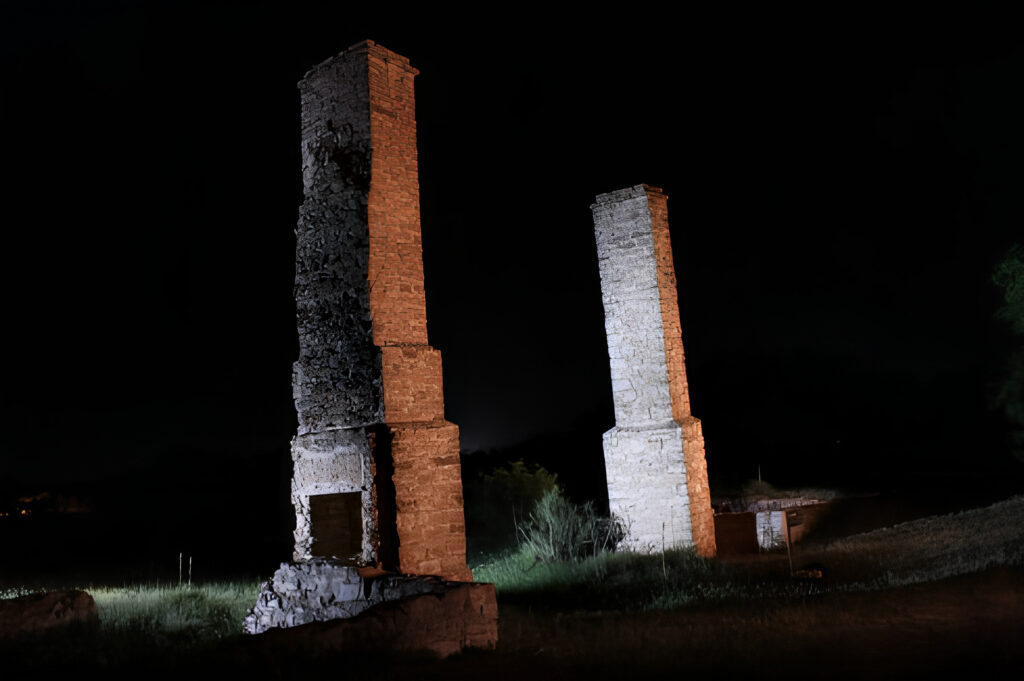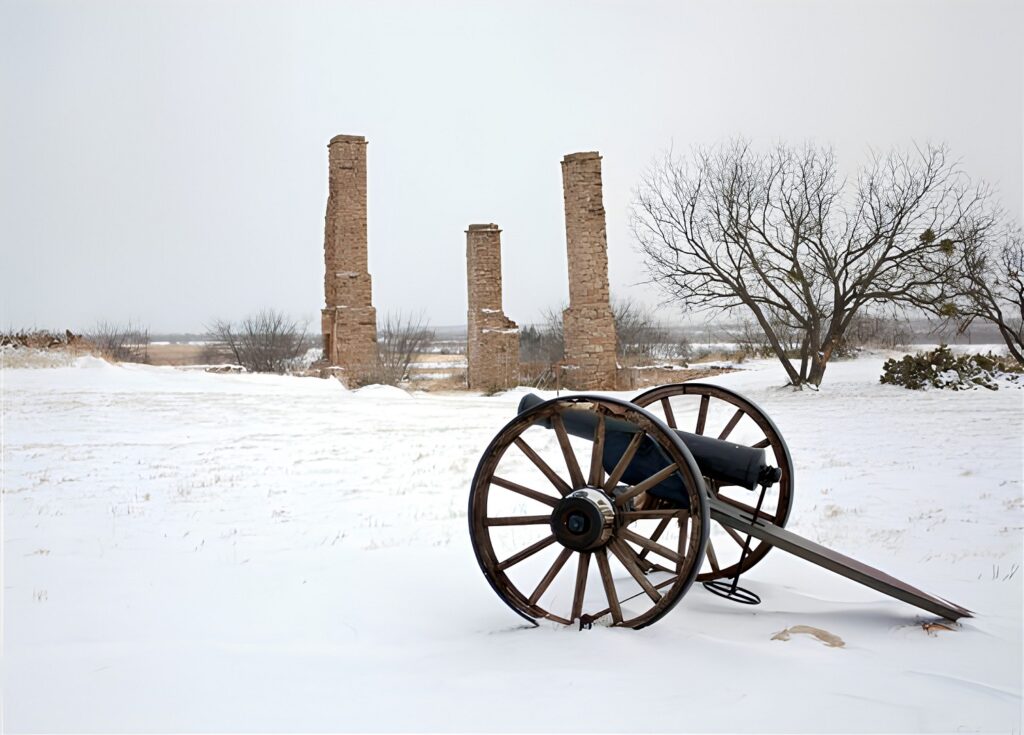Travel Channel Dig Wars
A new television program entitled “Dig Wars” on the Travel Channel featured Fort Phantom Hill in an episode that aired nationwide for the first time on July 10, 2013. The “reality television” program featured three teams of experienced “artifact diggers” who searched different historic sites across the U.S., competing for bragging rights about who found the best buried treasures.
The Fort Phantom Foundation prohibits digging by visitors but agreed to allow the teams of experienced diggers to search the site on the condition that all artifacts found would remain the property of the foundation. Below are images of two artifacts that were found at the dig: a martingale and a bullet carved as a chess piece (see below):

Archeological dig, historical research uncover new information about Fort Phantom Hill
In June 1998, a team of 16 archaeologists conducted a five-week “dig” at Fort Phantom. The dig was part of a four-part historical research project at Fort Phantom.
Dr. Grant Hall, associate professor of anthropology at Texas Tech University in Lubbock, led the dig. Dr. Hall’s team consisted mainly of graduate and doctoral students participating in his annual summer archaeological field school. Their goal was to begin initial archeological investigations of certain remains of the fort while gaining basic training in field archaeology. The group set up camp near the fort and lived outdoors in a “tent city” to get first-hand experience in conducting a field camp in a remote area.
The dig was part of a four-part historical research project at Fort Phantom, designed to give a more accurate picture of the fort and its history. The project included a topographic survey and creation of an accurate base map of the site, a comprehensive architectural survey of the remains of the fort, and an archeological study. In addition, historian Martha Doty Freeman of Austin, Texas, was commissioned to research historical archives and develop a complete bibliography and history of the site.
Doty’s research provided archival evidence to help preservation architects document and confirm the construction techniques used and how the fort developed. Dr. Hall’s investigations also contributed to the big picture, as his group found artifacts and other indicators of how people lived there. They also excavated three building foundations they could study to better understand construction methods and materials.
Although this first archeological dig only scratched the surface of what is buried at Fort Phantom Hill, historic architect and project director Rick Weather from the American Institute of Architects said the findings from the dig, combined with the architectural studies and historical research, helped the Fort Phantom Foundation make important decisions about the site, including how best to make it more accessible and interesting for the public.
The Texas Tech group investigated more ground than is usual for Dr. Hall’s summer field schools, but he said much more can be learned from the site, and he hopes to return to do more work in the future.
“I’m very pleased with what was accomplished so far,” Dr. Hall said. “We found wall lines of the buildings and got artifact samples, and the dig was very successful in those aspects. We basically established the width of the buildings in the kitchen for the enlisted men’s barracks. We recovered samples that should allow us to identify the kind of wood that was used for the uprights in the walls. That’s important in terms of being as accurate as we can in knowing the construction materials they used.”
A total of 388 cubic feet of soil was excavated in 17 different excavation units. The main excavation sites included a kitchen, a mess room and a sergeant’s room, all part of a complex of one of the five company barracks. The remains of a large stone chimney mark the spot. “We started there because it was the most intact, and we knew what it was [from historical documents],” Dr. Hall explained. “We knew that investigating this would give us a good example of what all these kitchen complexes were like.
“There have been a lot of rumors and speculation about the fort over the years, and this complete study cleared up some of those,” said Mr. Weather. “For example, in one of A.C. Greene’s books, the author wrote that the commissary was never finished. Ms. Freeman’s research proved that to be inaccurate. Post returns [reports from military posts sent in to headquarters on a regular basis] revealed that the quartermaster moved into his new commissary on Sept. 3, 1853.”
“In addition, some of the structures at the site have been misidentified over the years,” Mr. Weatherl continued. “An officer’s quarters was misidentified as the adjutant’s reading room. Our architectural research uncovered this when we carefully compared historic maps with the new topographic survey.”
